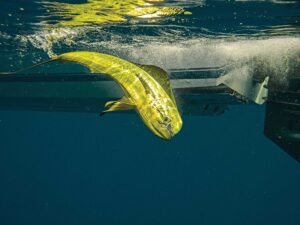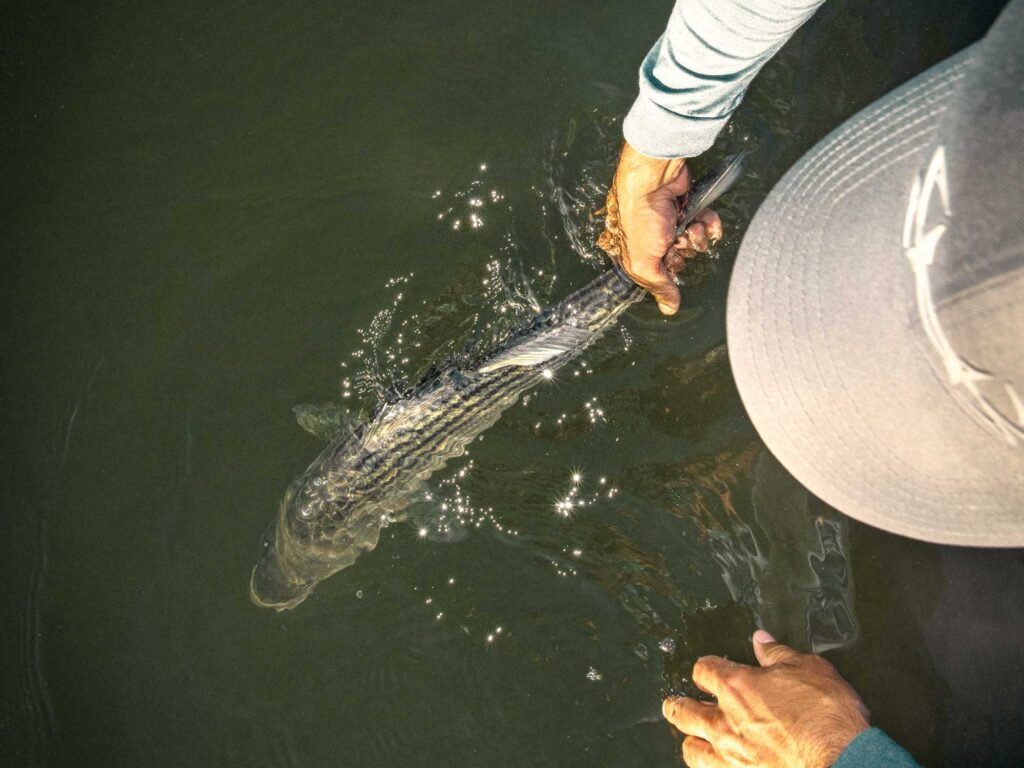
Photographer Bill LeConey was born and raised in South Jersey, about 20 minutes outside Philadelphia and 45 minutes from Atlantic City. A freshwater angler in his youth, he started fishing the salt 15 years ago, after he met Dan Schafer, a guide out of Stone Harbor who fishes from an 18-foot Action Craft.
LeConey eventually bought his own flats boat, an East Cape Vantage VHP that he had to drive to Atlanta to pick up. “You don’t see many boats like this around here,” he says. “I think a lot of guys, because of the bigger winds, the bigger bodies of water, they look at our boat and say, ‘What the hell are you gonna do with that?’”

His favorite target is striped bass, which he fishes for all year, only switching to tautog and sheepshead when the tides aren’t right in the marshes. He loves stripers because they’re the first fish he targets in the spring. “We start our season at the end of March, up north in the Raritan Bay,” he says. Flats boats in Raritan can be an iffy bet early in the season, so “we can’t just go out whenever. But we can always fish the backwater creeks and rivers. We’ll start early when it’s calm out, target those bigger fish on the bigger water, then get into the smaller bodies of water, the estuaries, get away from the traffic.
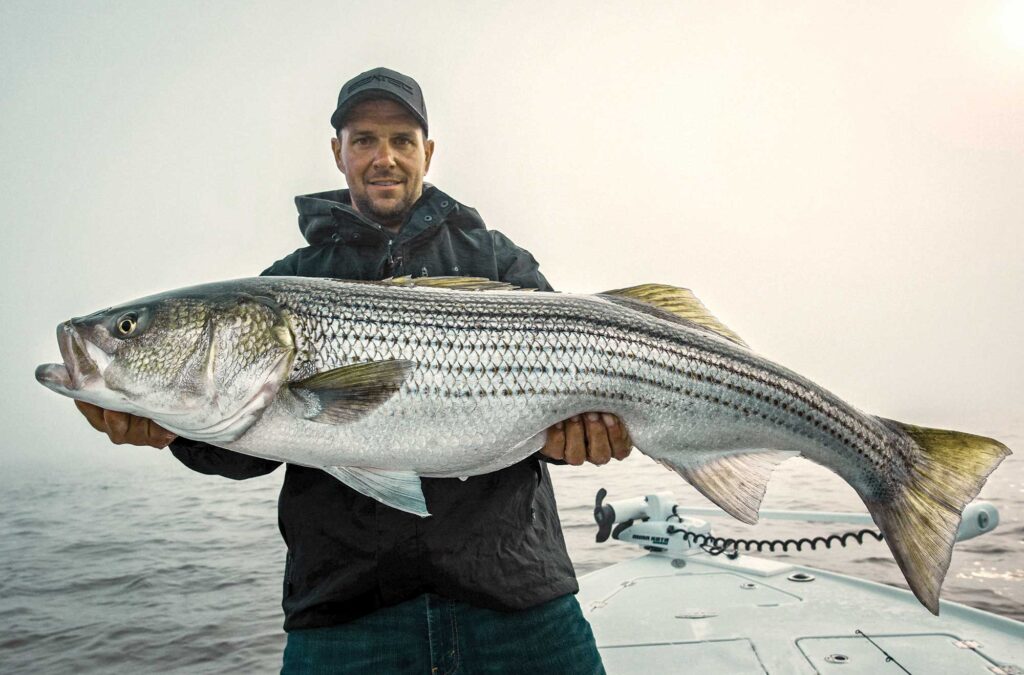
“Most of these guys have these bigger boats, and they just flounder fish all summer. I mean, the one drawback is, when you’ve got 3-footers and it’s going off out front, you probably can’t get out there in a flats boat. But I just love its versatility. It’s so easy to trailer, to launch by myself. And it’s so fuel-efficient! I probably get four to five trips on a tank of gas. Everything about it is just a lot of fun. I like being low to the water, not only to drive but also to fish from.”
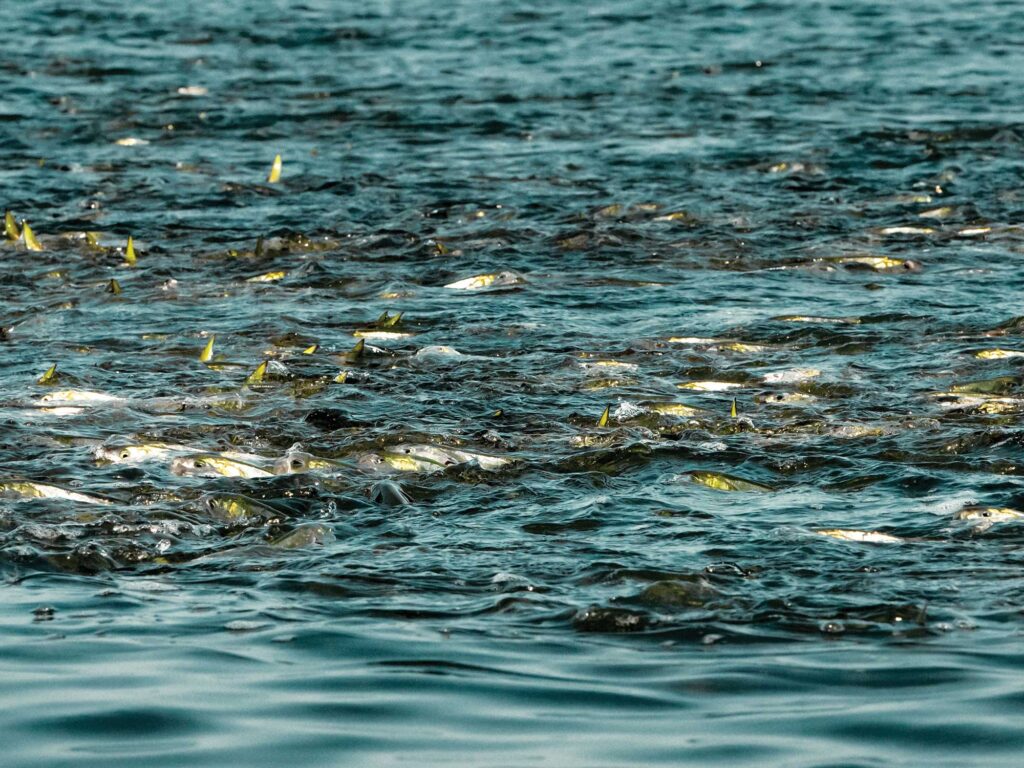
LeConey has been shooting photos for about seven years now, after he bought a cheap Nikon DSLR to take on a trip to Florida with his dad. Another friend of his, a more experienced photographer, saw the photos he brought back and asked if he’d ever thought about trying to make photography more than a hobby. “He said, ‘I see the way you’re leading lines, the way you frame things. It’s something I think you should look at.’ So I started taking the camera out more often,” LeConey says. “Now I find myself not caring whether or not I have a rod in my hand because I’m more excited about trying to capture a moment,” he chuckles. “That’s still hard for me to come to grips with. Are you going to pick up this rod while it’s just chaos going on? Or are you going to try to get a photo of something that you may look back on in 20 years?”
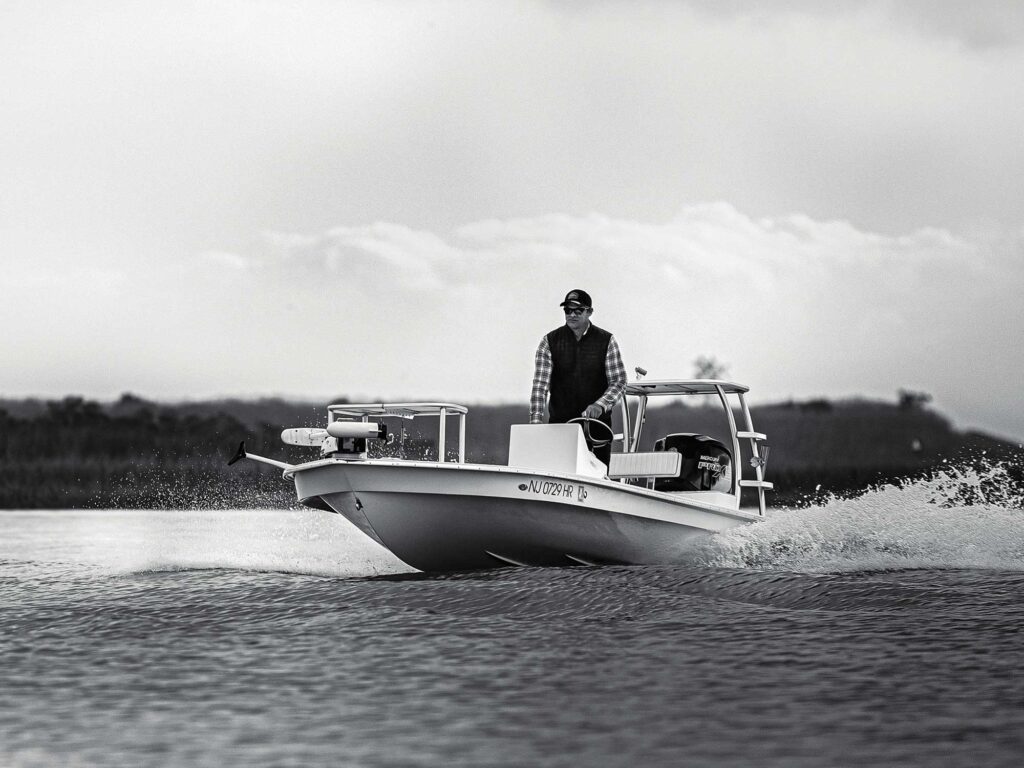
LeConey now shoots with a Nikon D750. His photos have appeared in Skinny Water, On The Water, New Jersey Monthly, and ad campaigns for Tackle Direct, G.Loomis and Free Fly apparel. He brings three lenses with him out on the boat: a 70-200mm 2.8, a24-70mm 2.8 and a 20mm 1.8 wide angle. His favorite is the 24-70mm lens. “It’s a nice midrange,” he says. “That big lens was my first one, but there were times when I was hanging off the back of the boat just to get the angle I wanted, so I got something I could scale down a little bit. You can do almost everything on a small boat with that lens.”
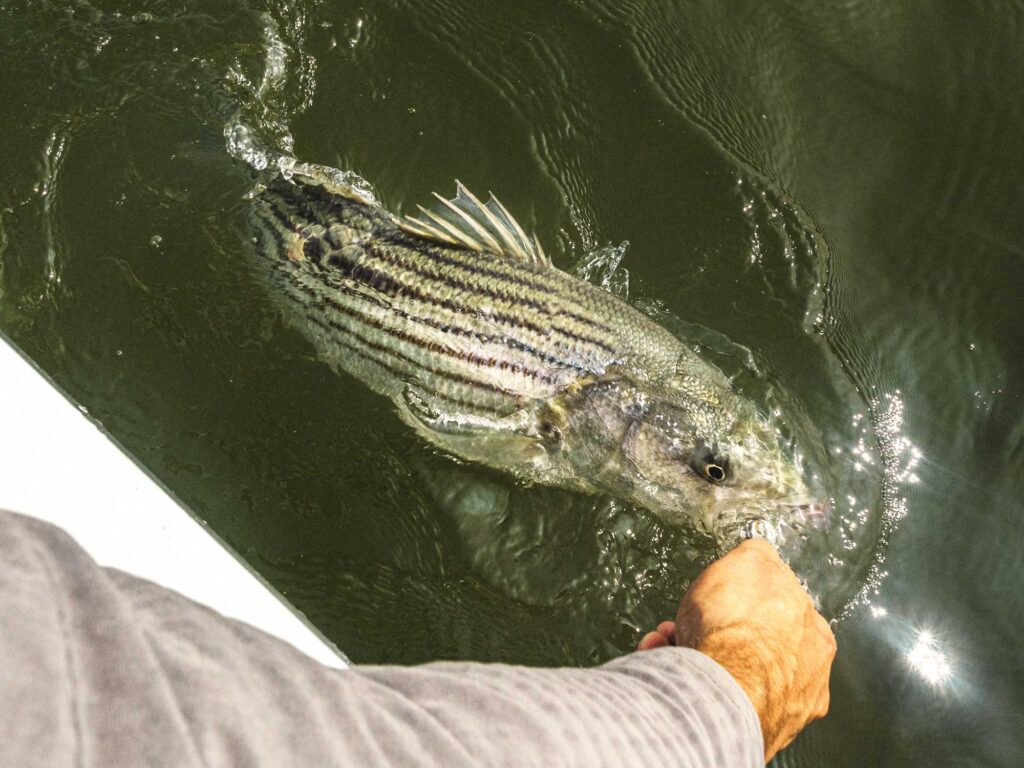
Size clearly doesn’t matter much to LeConey. “A lot of guys, they want to go out in the big water. They want to catch a 50, which I get. It’s a beautiful thing to pull a fish that big over the rail. But it’s also fun to be able to stalk them in a foot of water. Up in the marsh, when that tide turns, we know where these fish tend to stack up. They’ll wait for these feeder creeks to start pumping out because it pulls all the bait out with it. You give it an hour after the tide turns, and it gets pretty chaotic on topwater.”
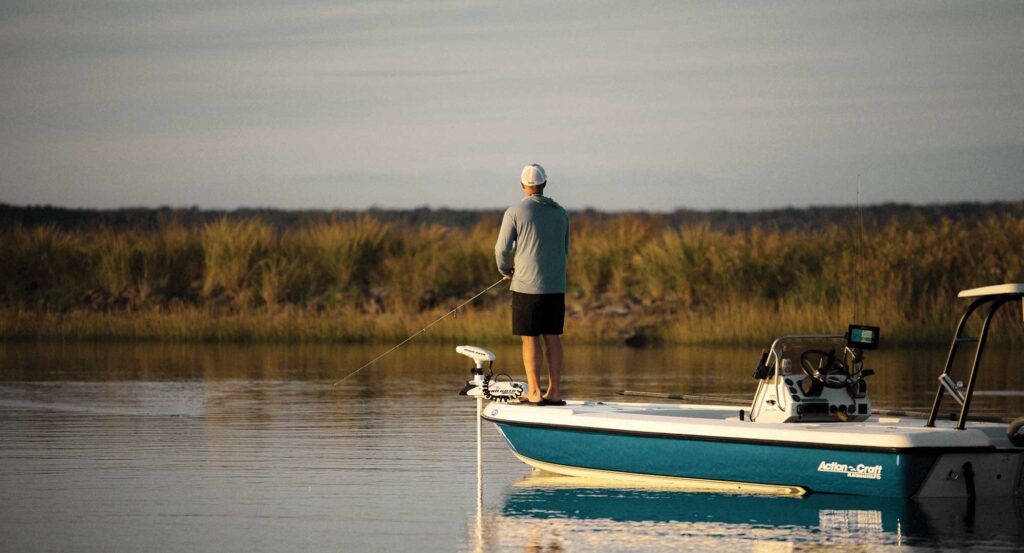
I ask him what it’s like to live and fish in the Garden State. “New Jersey isn’t a place that anyone wants to visit. But it’s one of the few places on the coast that are a mecca for striped bass. If you can look past all the negatives—between the population and the prices, how expensive everything is—and get back into some of the places that you can fish for these bass, and I mean it’s beautiful!” he says. “You can find these pockets of marsh and shallow water that 90 percent of the people that own boats, they can’t get to. People would be surprised to learn what you can find when you decide that you don’t want to just troll outside with 300 other boats over and over every weekend.”
Read Next: Is New Jersey the New Striped Bass Mecca?
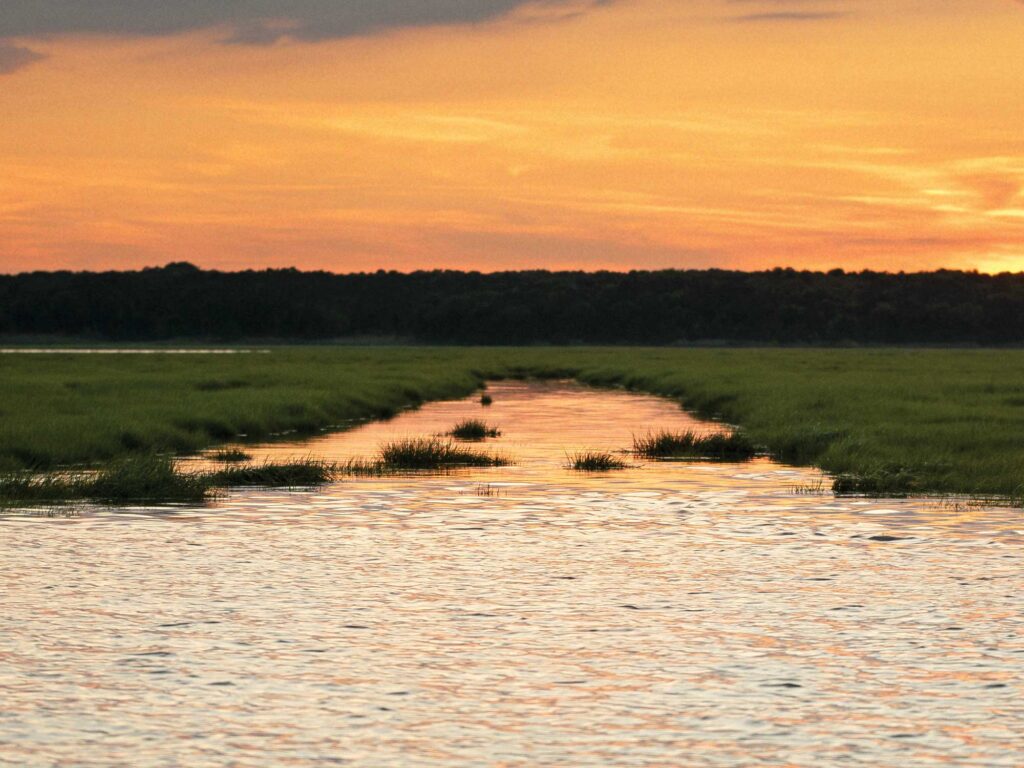
I ask LeConey what kinds of shots he’s looking for when he’s out on the water. He tells me he’s not a huge fan of the grip-and-grin. “There’s only so many things you can do when holding a fish up,” he says. “So I try and capture more of the candid stuff of the people, like my buddy tying knots or backing down the trailer. I try to put together pieces of the puzzle about what happened throughout the day. It’s not necessarily about numbers. We can pull on a fish and catch one, and sometimes that’s enough for us to say, ‘Let’s sit back and crack a beer.’ You know what man? That was worth spending two hours just to get that one fish to bite.”

